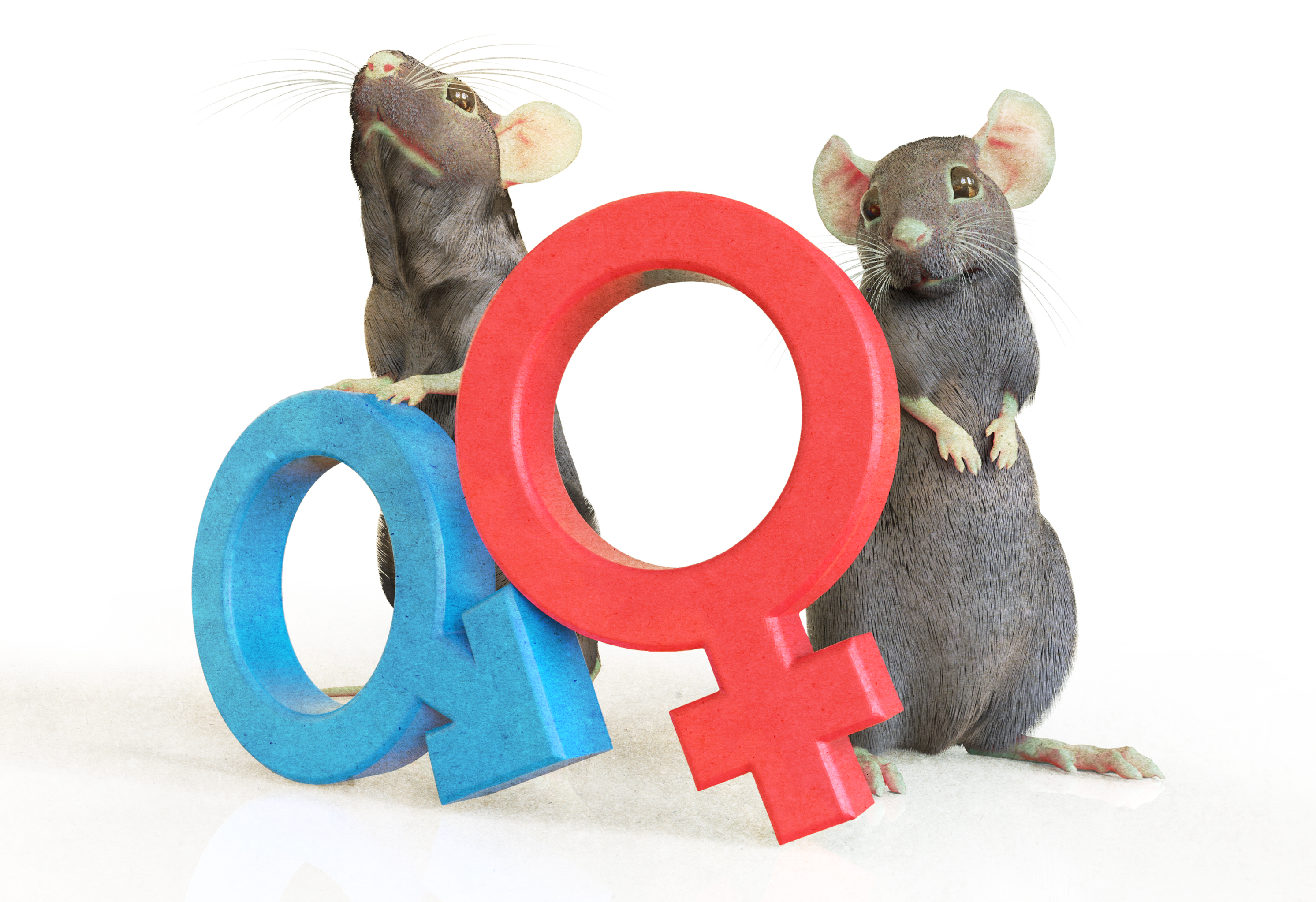
Read the latest Issue
Is the sex of research animals misdirecting medical research?

The sex of animals has an effect on the results of biomedical research and should be considered in design of scientific studies, according to researchers from the Wellcome Trust Sanger Institute, the European Bioinformatics Institute (EMBL-EBI) and the International Mouse Phenotyping Consortium. This statement, published in Nature Communications, is based on the discovery that the differences between male and female mice have an effect that could significantly alter the interpretation of studies using animal models with only one gender (sex).
Sex influences the prevalence, course and severity of many diseases and disorders, such as cardiovascular diseases, autoimmune diseases and asthma. Although this is common knowledge, it is not uncommon for researchers to ignore the sex of research subjects, especially in animal studies – mainly for logistical reasons.
Today’s research is the largest study quantifying the differences between males and females – known as sexual dimorphism. The collaborators analysed 234 physical characteristics, including body composition metabolic profile, blood components and behavioural traits of more than 50,000 mice.
In approximately 10% of the measurable phenotypes, such as blood pressure or glucose levels, we see significantly different values in males and females
“We incorporated data from ten centres in the world, looking at an equal number of male and female mice,” explains Terry Meehan, IMPC Project Coordinator at EMBL-EBI. “We found that in approximately 10% of the measurable phenotypes, such as blood pressure or glucose levels, we see notable sexual dimorphism, meaning significantly different values in male and female mice.”
All the data from the study is available to researchers through established resources at EMBL-EBI. This comprehensive analysis will help researchers find the exact mouse strain they’re looking for, reducing the need for new experiments.
The team found that in the control group of mice, sex had an impact on 56.6 per cent of quantitative traits, such as body weight. The measured impact was 9.9 per cent on qualitative traits, for example whether the shape of the head was normal.
In mice that had a gene switched off – the mutant mice – sex modified the effect of the mutation in up to 17.7 per cent of quantitative traits and 13.3 per cent of qualitative traits.
This study is a major step highlighting the impact of sex differences in research
“It is likely that important scientific information is missed by not investigating more thoroughly how males and females differ in biomedical research,” declares Steve Brown, an author of the study and Chair of the IMPC Steering Committee. “Rather than extrapolate the results to account for the opposite sex, these results suggest designing experiments to include both sexes in the study of disease. This study is a major step highlighting the impact of sex differences in research, and will help in accounting for those differences in the future of biomedicine.”
This study has implications for the design of future animal studies and clinical trials. More than 20 years ago, the NIH changed its rules so that all clinical research in the US has to include both sexes. Nevertheless, women are still underrepresented and preclinical trials are still done predominantly in males.
“This was a scientific blind spot that we really thought needed exploration,” says Natasha Karp, lead author who carried out the research at the Wellcome Trust Sanger Institute, and now works in the IMED Biotech Unit at AstraZeneca. “A person’s sex has a significant impact on the course and severity of many common diseases. It also impacts the side effects of treatments – which are being missed. Now we have a quantitative handle on how much sexual dimorphism has an impact in biomedical research. In the movement towards precision medicine, we have to account for not only genetic differences between people, when we consider disease, but also their sex.”
This post was originally published on EMBL-EBI News.
Looking for past print editions of EMBLetc.? Browse our archive, going back 20 years.
EMBLetc. archive